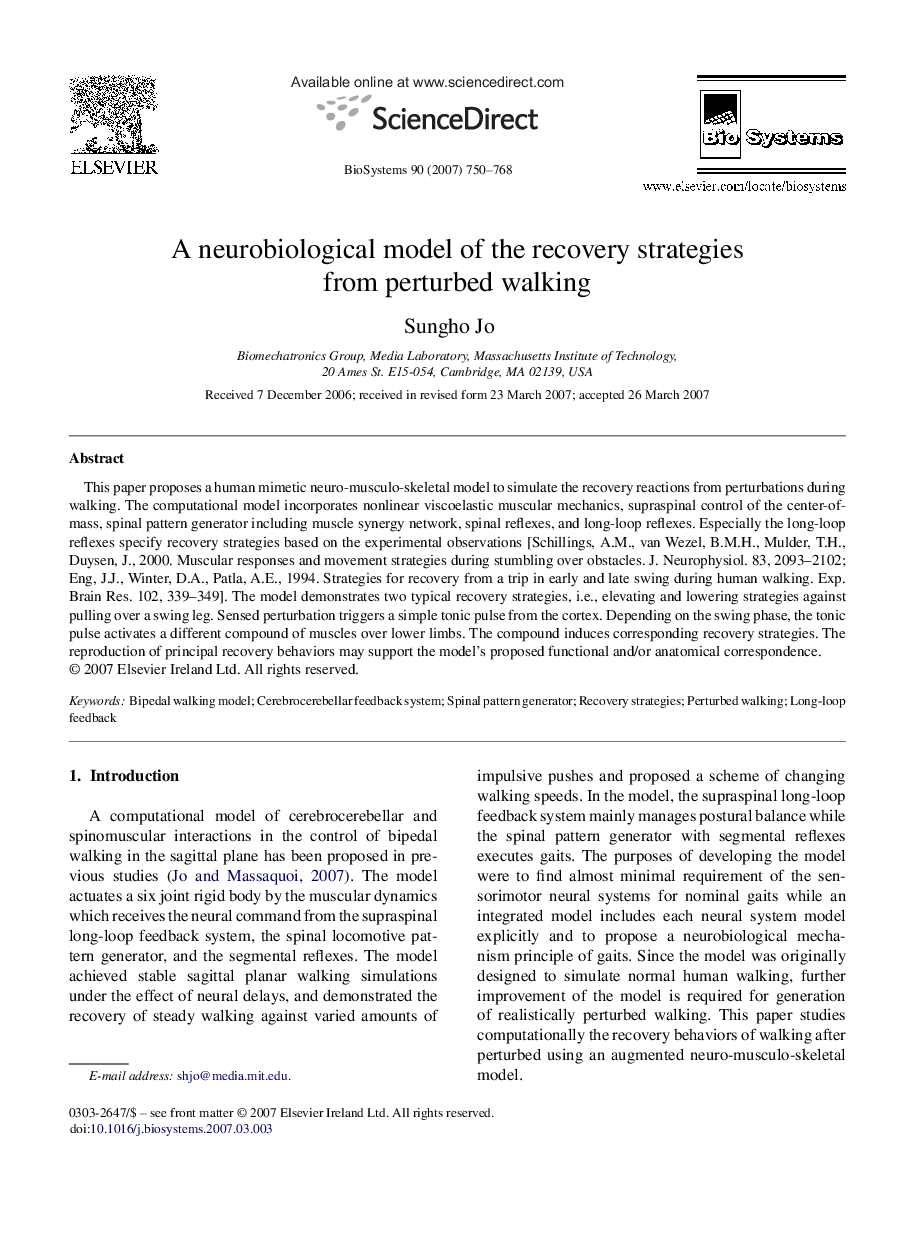| Article ID | Journal | Published Year | Pages | File Type |
|---|---|---|---|---|
| 2076581 | Biosystems | 2007 | 19 Pages |
This paper proposes a human mimetic neuro-musculo-skeletal model to simulate the recovery reactions from perturbations during walking. The computational model incorporates nonlinear viscoelastic muscular mechanics, supraspinal control of the center-of-mass, spinal pattern generator including muscle synergy network, spinal reflexes, and long-loop reflexes. Especially the long-loop reflexes specify recovery strategies based on the experimental observations [Schillings, A.M., van Wezel, B.M.H., Mulder, T.H., Duysen, J., 2000. Muscular responses and movement strategies during stumbling over obstacles. J. Neurophysiol. 83, 2093–2102; Eng, J.J., Winter, D.A., Patla, A.E., 1994. Strategies for recovery from a trip in early and late swing during human walking. Exp. Brain Res. 102, 339–349]. The model demonstrates two typical recovery strategies, i.e., elevating and lowering strategies against pulling over a swing leg. Sensed perturbation triggers a simple tonic pulse from the cortex. Depending on the swing phase, the tonic pulse activates a different compound of muscles over lower limbs. The compound induces corresponding recovery strategies. The reproduction of principal recovery behaviors may support the model's proposed functional and/or anatomical correspondence.
